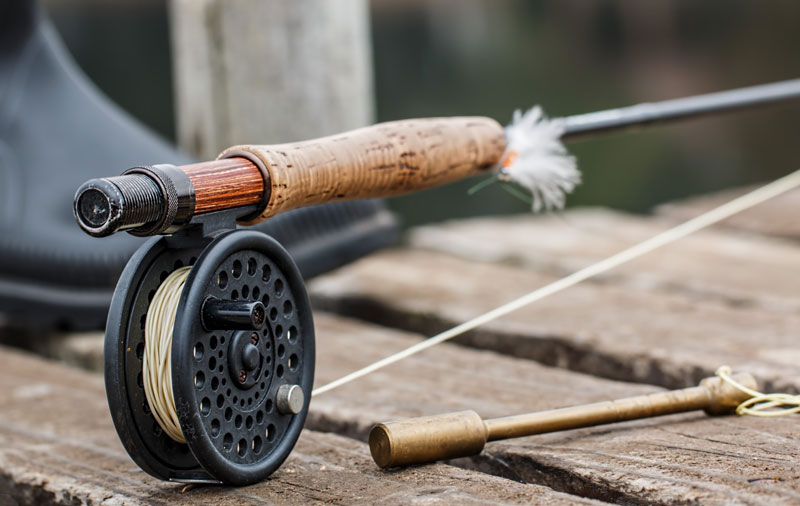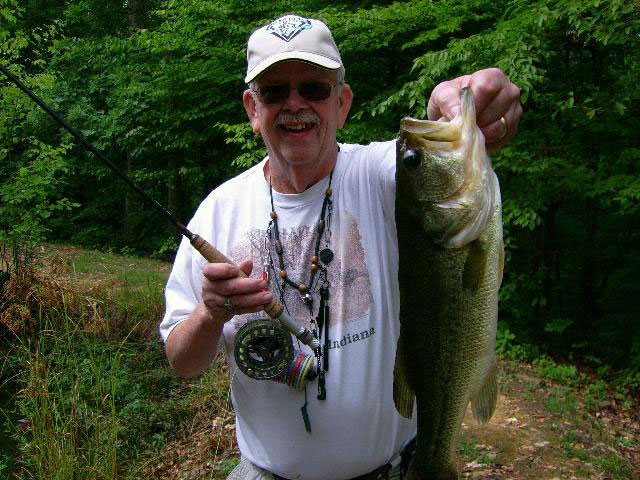So, you want to try fly fishing? Terrific! I can think of no more challenging, yet fun way to fish. If you can get over any initial hesitation, it will be a lifelong passion and something you enjoy as long as you live. That said, it can be a daunting task to get started. There are many sizes and styles of rod and picking the right one for you might seem confusing. The key at the beginning is to keep it simple. The steps laid out in this article should get you on your way to having the right gear for your fish species of choice.

To begin you must ask yourself, “What do I want to catch?” The fish you want to pursue will determine the rod weight, length, and style you will go for. Fly rods range in size from 1-weight for small trout in tiny water to 14-weight for pelagic big gamefish. Obviously, smaller fish are more fun on a smaller rod, and larger fish require something big enough to handle the fight. If you are a trout bum or like fishing for panfish, you probably won’t go for anything bigger than a 6 weight rod, and so your search is narrowed down to something in the 4- to 6-weight range. The 1- to 3-weight rods are specialized and require more experience. For fishing mid-sized species, such as bass, pickerel, or snakehead, you will want to choose a 6- to 8-weight rod. For some of the larger Bay species, like rockfish, bluefish, and redfish, something in the 7 to 9 weight is a good range. I personally have fished for rockfish with a 6-weight successfully, but the size of the Bay and the winds make it difficult to cast.
This brings up the next question to ask, which is, “How big is the water that I am going to fish?” Smaller streams and rivers, such as the Little Patuxent, have trees and other features that minimize wind, and the trout do not get particularly big, so a 4 or 5 weight works perfectly. On a bigger river, such as the Savage or the Youghiogheny, a 6 weight will be necessary to cast longer distances and throw heavier flies. Fishing on a lake where there could be higher winds and the fish are hiding in cover, such as lily pads, the best choice is something with more backbone, so a 7-weight rod or heavier will be necessary.
Question number three: “What kinds of flies do I want to fish?” This is where you can really home in on the right rod for you. Going the Norman Maclean route, where the dry fly is king, you want a rod that presents the fly more delicately, so a 4-weight rod might be the choice. However, a 5-weight can work similarly, but also affords the opportunity for weighted nymphs and smaller streamers. But fishing with big, wind-resistant bass flies requires something with more backbone — a 7 or 8 weight. Poppers and other topwater flies often require a fast-action rod to set the hook quickly, which is where an 8 weight comes in handy. It would be the same logic out on the Bay searching for busting rockfish.
As far as length goes, for the beginner, my recommendation is to go with a standard nine foot rod. You might find as you learn how to use your rod that you want something shorter, because you are fishing small water and need more maneuverability; on the other hand you might think a longer rod with more reach would be great for big water. Those steps can come later. For now, keep it simple.

Now that you have chosen the right rod, you’ll need a reel and line. The good news is, since you chose a rod weight, the others will match it. You can go back through the steps previously mentioned to choose your reel. Fly reels generally come in the traditional spool size or large arbor, and it should match the line weight of your rod. The traditional size is very light and can hold a good amount of backing. These are perfect for panfish, trout, and even mid-sized species, because most of those fish do not make the kind of runs that pull enough line out to require 300 yards of backing. If you are fishing for larger fish in the Bay or ocean, a large arbor reel can hold more backing, pick up more line per crank, and offer anti-reverse technology, which will prevent your knuckles from getting hit by the knob if a fish takes a screaming run.
As for the line, in the interest of keeping things simple I advise using a floating line to start. It offers the most flexibility for different types of fishing and does not lock you into one style. You can add a length of sinking tip line to your floating line, but you cannot remove that sink tip if it is built into the line already. And for beginners, I would recommend using a line that is on the less expensive side, roughly $40. You might find you like the $80 or $100 line as you get more experienced, but you don’t need to break the bank at the very start. Sticker shock is a big part of fly fishing, but the line will last for years if you make sure to keep it clean.
For a leader and flies, consulting your local fly shop is the best move. They will help you with what works in the area.
Price is the final thing to consider when you purchase your first fly rod. Fly outfits can be outrageously expensive, or they could be $150 or less. The more you pay, the nicer your outfit is going to feel. For my money, my favorite rods come from Orvis. Even their entry-level rods are of great quality and every rod they sell is backed by a 25-year warranty. I started fly fishing when I was 11 with an Orvis rod and have only recently passed the warranty on it. I broke it four or five times and each time the rod was replaced with a totally new one. If the model was discontinued, Orvis upgraded me to the next level. Whatever you buy, check to see if it has a warranty. Sometimes paying a little more now can save you money in the long term.
Fly fishing is an investment of time, energy, and yes, money. If you are willing to use these steps and carefully read descriptions in your search for the right rod, however, I’ll bet you find the same incredible enjoyment that I take in the sport.
-By Peter Turcik